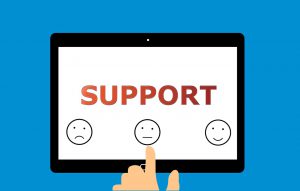The writer Mark Twain once said, “Continuous improvement is better than delayed perfection.” Sounds pretty deep, huh? And although he wasn’t talking about a strategy for business growth, that quote could easily be the tagline for the Japanese philosophy known as “kaizen,” which many businesses have adopted because of its focus on continuous improvement to create more value with less waste. So what is kaizen, and is it something that could be helpful to your business?
What Is Kaizen?
According to Maasaki Imai, the management consultant credited with bringing the concept of kaizen into the business world, “The message of the Kaizen strategy is that not a day should go by without some kind of improvement being made somewhere in the company.” That might sound like a lot of pressure, but kaizen, which translates to “continuous improvement,” or “change for the better,” puts the focus on improvement as a gradual and methodical process. In fact, in the concept of kaizen, there is no perfect “end” to something – everything can be improved upon. 
If this sounds like it could end in a rigid and ruthless pursuit of efficiency, which overlooks employees or treats them like machines, that is not the case. When implementing a kaizen-focused strategy, you should be thinking about a variety of ideas that aren’t just focused on output, but also on employees. Kaizen means making the work environment more efficient and effective by creating a team atmosphere, improving everyday procedures, ensuring employee engagement, and making a job more fulfilling, less tiring, and safer.
In fact, employee engagement is a huge part of kaizen: since kaizen recognizes that people who perform certain tasks and activities are the most knowledgeable about that task/activity, a central part of kaizen is including them to create change as the best strategy for improvement. That means employees should be given autonomy to take action on improvements themselves, which will build a culture of engagement. And, since a major component of kaizen is recognizing that even very small changes can make a big difference, everyone’s contribution is valued, although teamwork is the most central component of kaizen.
One of the most well known examples of a company implementing the kaizen concept is Toyota: within its production system, Toyota encourages and empowers all employees to identify areas of potential improvement and create viable solutions.
So how does kaizen work in theory and practice? Let’s look at the five key principles behind it, and some strategies for implementing it in the workplace.
The 5 Principles of Kaizen
According to kaizen, in order to strive toward continuous improvement, your business should work on these five key principles:
- Know your customers – Knowledge of your customers and their interests will enhance their experience, and create value for everyone.
- Let it flow – This principle refers to the target of zero waste in an organization. Sound impossible? That’s the thing about kaizen – you’re never going to achieve zero waste, but if you could that would mean the process of improving would stop. And remember: there is no perfect end point in kaizen.
- Go to Gemba – “Gemba” translates to “the real place,” and as the leader of an organization, you need to follow the action, as value is created where things are actually happening.
- Empower people – Teams should all have goals to work towards, and should be given the right tools and processes to achieve these goals. In addition, you need to make sure that no one is given contradictory goals, so everyone can work together as a team.
- Be transparent – To know if you’re improving, you need to track your performance and progress with real data and metrics.
These five principles should keep all of those small changes coming, and should hopefully lead to three major outcomes, which are the three pillars of kaizen:
- Good housekeeping – This means that your workplace should be neat, clean, and efficient, so that materials and tools are easy to locate, use, and maintain. All of this should help you maintain a balance, and not have either an excess in production, or a shortage of material or goods.
- Elimination of waste – Anything that doesn’t add value should be eliminated and removed from your processes to ensure that only valuable services and products are offered. The goal of eliminating waste should help you to improve relationships and communications with outsiders like suppliers, and to provide maximum value and benefit for your customers.
- Standardization – Standardization involves producing products and services to pre-set specifications. The standards, though, should be appropriate for your business, as well as accepted as fair and achievable by everyone who is involved in the process. Ultimately, a good standard should create the safest, easiest, and most efficient way to perform a job.
Using Kaizen in Your Business
So why might you consider using the central ideas of kaizen in your business? If you’re a small business owner, chances are there are a ton of things you want to do for your business, but you just can’t seem to get to it all, maybe because it’s all just too much and you feel overwhelmed, or like you have to do everything yourself.
Changes don’t happen at your business because changing everything you’d like to, or making a few major changes, just seems like too big a task and, again, totally overwhelming. But the advantage to kaizen is that it is all about incremental, step-by-step change. It’s a continuous process, not a time-bound one, so you can focus on separating out the urgent and the important.
Another big advantage to kaizen is that it is meant to empower both owners/managers and employees, and give everyone the tools to effect positive change in your business, so you are not the one shouldering the entire burden of change making.

If all of this sounds right to you, where do you start? Well, since kaizen requires a lot of collaboration, teamwork, and discussion, the first step to implementing this style of workflow should be to get everyone on board. You’ll have to create a workplace that doesn’t resist change; in fact, employees need to be motivated and fully involved in the change.
The next step, then, is to get everyone involved in identifying problems and solutions; they should also know that they are empowered to make changes. So, for example, if you have an employee working in customer service who has feedback on how to improve the processes in that department, they should have the means to give that feedback, and then they should even be made responsible for implementing those changes.
And if you’re not sure how to get the above process of implementing those changes rolling, there is actually a four-step cycle to follow to make improvements, known as the PDCA cycle. PDCA stands for “plan-do-check-act,” and it looks like this:
- Plan: Map out the changes you want to make so that everyone knows what to expect when trying to solve a problem
- Do: Implementing the best solution to the problem
- Check: Evaluate the solution to the problem to see if it worked
- Act: Determine whether or not the solution should become a company standard, or if it needs further changes. If you decide you need to implement more changes, go back to the plan step and start the process over.
We can often get caught up in stressing over the big changes we think need to be made, or we give ourselves strict deadlines for making major changes, but we often just end up getting overwhelmed, and those big changes don’t seem to materialize. If this sounds familiar, stop and consider that maybe making small changes as you go could add up, and result in some pretty big positive changes for your business. Using the concept of kaizen could help you to remove issues at your business from the root, and improve the way you work for good, all while taking some of the burden off of your shoulders. So does it sound like something that could work for your business?











 . For example, some things to watch out for that can often be baked into the ethos of a workplace include:
. For example, some things to watch out for that can often be baked into the ethos of a workplace include:

